Jim Bowen's Bullseye
Introduction
This part of my website is about the game show Bullseye when it was presented by Jim Bowen. Ultimately, it will teach you the important skill of being able to recognise which series of Bullseye you are watching with the minimum of information. Apart from that, it has some interesting things about Bullseye.
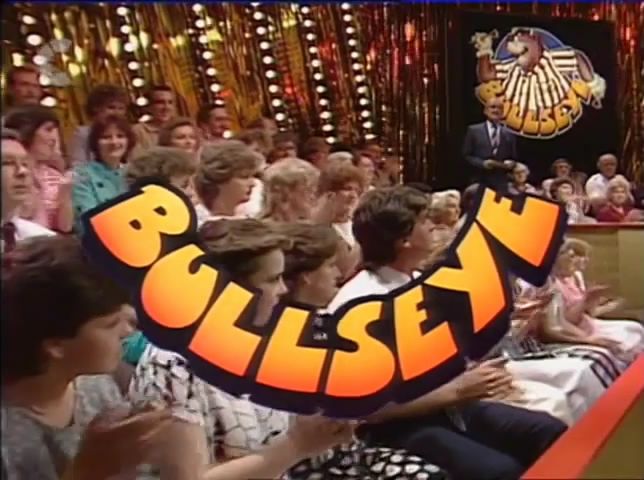
Bullseye was the best game show. It had a simple premise that never got boring. Jim Bowen was the best game show host - he wasn't slick or fake or artificially hyperactive. On the show, he was just a politer version of himself. He was really the opposite of a standard game show host.
Jim Bowen and Tony Green (the scorer) were genuinely really happy if contestants won the star prize; they were genuinely sad if they didn't. I can't think of any other program where the hosts cared that much. It made viewers feel much more involved in what was happening. Jim Bowen and Tony Green behaved as if they had the same status as the contestants. They never acted as authoritative superiors. You can imagine them hanging out with the contestants, and it sounds like they spent hours with the contestants in rehearsals before the show started. With some game shows, you get the feeling that the host is chauffeured in ten seconds before filming starts, and leaves the second the credits finish.
The prizes on Bullseye were never life-changing ones, but that's what makes a good game show. If a prize is a million pounds, it changes the purpose of the show - are people there to have their lives changed, or are they there to have fun? A financial prize isn't particularly interesting - you may as well give out book tokens or Tesco vouchers. Bullseye's prizes such as cordless phones, camcorders, and nesting tables are all individual items that make you think about them. They are nice prizes to win, but no one is going to be upset if they don't get them. (Admittedly, in series 13, the "Treasure Chest" star prize of £5000 in cash appeared, but that was rare). People go on, for example, "Who Wants to be a Millionaire" because they want to win a fortune, and change their lives. People went on Bullseye because it was fun to do so - anything they won was a bonus.
Bullseye showed how difficult darts actually is. Apart from just a handful of professionals in the charity rounds, there were hardly ever any 180s on the show. Contestants who were clearly very good darts players (and who Bowen and Green said had played well in rehearsals) might play dreadfully on the actual show. Top ranking professionals who appeared multiple times had good days and terrible days. It wasn't easy. (For example, Bob Anderson once scored 380, which puts him among the top scorers ever on Bullseye. He also once scored 160.)
Bullseye came at a time when darts was much more mainstream than it is now. Even without watching darts tournaments, the average person used to know the names Eric Bristow, Jocky Wilson, John Lowe and so on. Bullseye both contributed to, and reflected, that popularity. Darts is still huge, but it's been in the background for a while. In the last year or so, it seems to have risen in popularity again. Luke Littler, for example, is pretty much a household name. There has even been an article about dartitis on the BBC website, which until recently wouldn't have been of interest to many. [It features comments by former darts star and Bullseye guest, Dr Linda Duffy (formerly Linda Batten).]
There were 14 series of Bullseye with Jim Bowen, and about 320 episodes. To put this into perspective, Last of the Summer Wine only had 295 episodes. At its peak, Bullseye was getting about 17 million viewers an episode.
The YouTube comments for episodes of Bullseye are generally really positive. People might mock the prizes, the jokes, Bowen's mistakes, and so on (all of which made the show what it was), but there is still huge love for the programme decades after it finished.
Consolation Prizes
Contestants who took part in Bullseye received prizes for just taking part - these were consolation prizes, but the winners received them too. These prizes always included Bullseye darts. Over the years, the other prizes included gold-plated chalk holders, pens, key rings, embroidered badges, glass tankards, pewter tankards, goblets, and Bendy Bully dolls. In early series, there might be one consolation prize to be shared between the pair of contestants i.e. one set of darts and a chalk holder between two people. Later episodes were more generous. In earlier series, tankards were only given to the winners and the pair that came second.
Pewter tankards were introduced in series 5. These had glass bases, which seems to be common for pewter tankards in general. I'd imagine these were an existing design bought in bulk by the production company and engraved by the manufacturers. You can buy very similar tankards from several places if you search for the words: pewter tankard with glass base and rope handle. Nowadays, they cost about £40. In series 5, men and women both received tankards, but on one occasion, the women's tankards were filled with flowers:
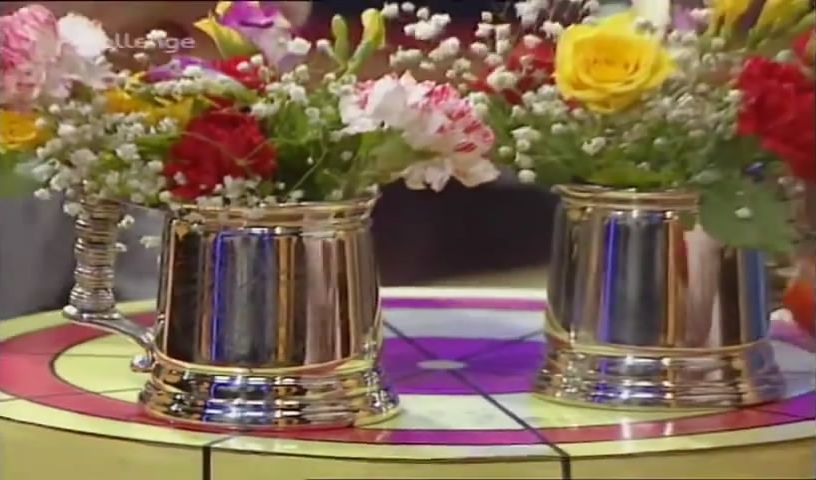
From series 6 onwards, women were given goblets instead of tankards. The reason was never really explained satisfactorily. The goblets looked more expensive than the tankards. Women could choose tankards if they specifically asked for them, as shown here, where Jim Bowen is swapping a goblet with a tankard in series 12:
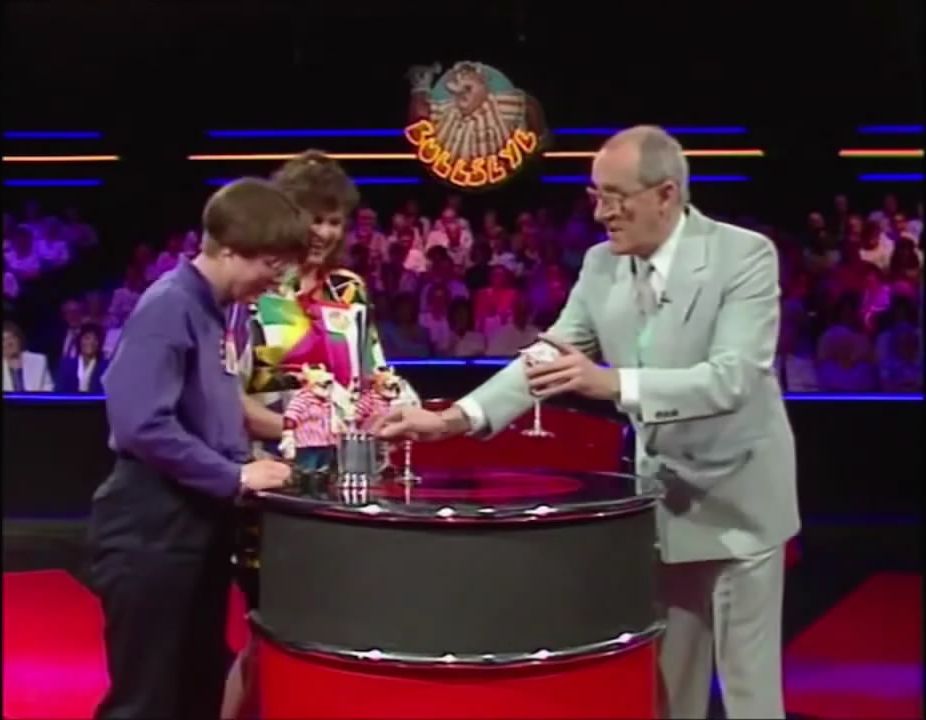
Proper prizes
Apart from the consolation prizes, the winners of each episode got the chance to win small prizes in the Prize Round, and afterwards, the expensive Star Prize. The contestants did not win a prize each - anything they won was shared between them. If they won a caravan, for example, they would have to decide how to split it. Jim Bowen once said in an interview that contestants signed a contract before the show stating that if they didn't want the Star Prize, the production company would buy the prize off them. This isn't quite the same as receiving the value of the prize, but it would still be better than nothing. In a documentary called "You can't beat a bit of Bully", one Star Prize winner who won a car explained how they were offered a cash alternative of £1750, but they took the car, which they then sold for £3000. In this BBC Sounds documentary here, another contestant tells how they were offered £1750 for their prize, so that must have been the going rate.
The prizes on Bullseye have developed a reputation for not being very good, but I don't think this applies to most of the Prize Round prizes. Some of the prizes were easily worth £300.
Here are the prizes that one pair of contestants won in series 3, episode 20 (guest Ted Moult): two Amstrad CB radios, a disc camera, a food hamper, a cut glass rose bowl, electric kitchen gadgets, Bully's game, a portable TV and radio cassette, and an actual piano and piano stool. (Luckily, they didn't gamble. The pair that did gamble got just 21 - first player: 1, a bounced-out treble 20, and 1; second player: 14, 4 and 1.) Maybe the piano isn't the best piano ever made, but it's still a piano. Maybe you didn't know Amstrad made CB radios... It's all still a good set of prizes.
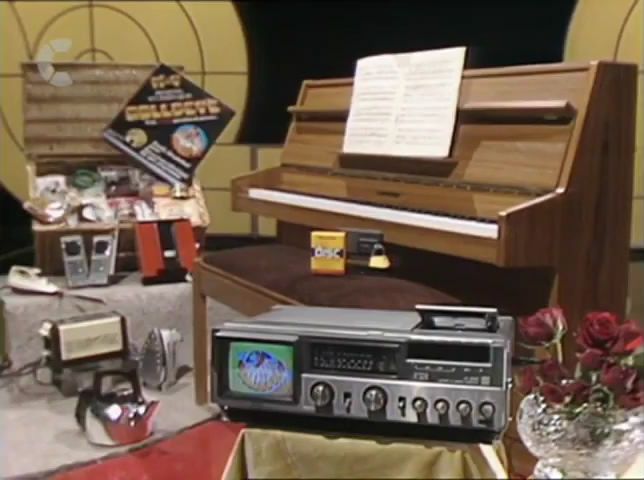
Other good prizes that appeared on Bullseye include: A little snooker table:
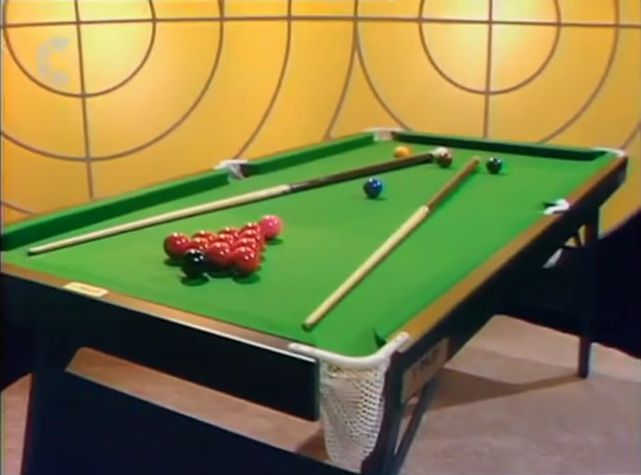
One of these things:
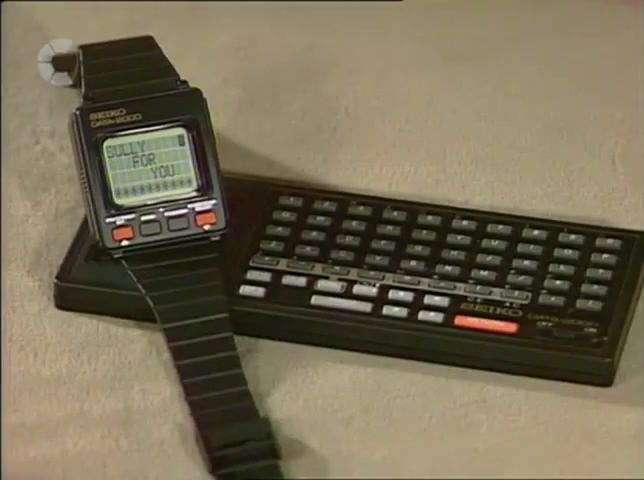
A radio, record and cassette player that plays records vertically:

A remote control cat. Look me in the eyes and tell me this isn't a good prize.
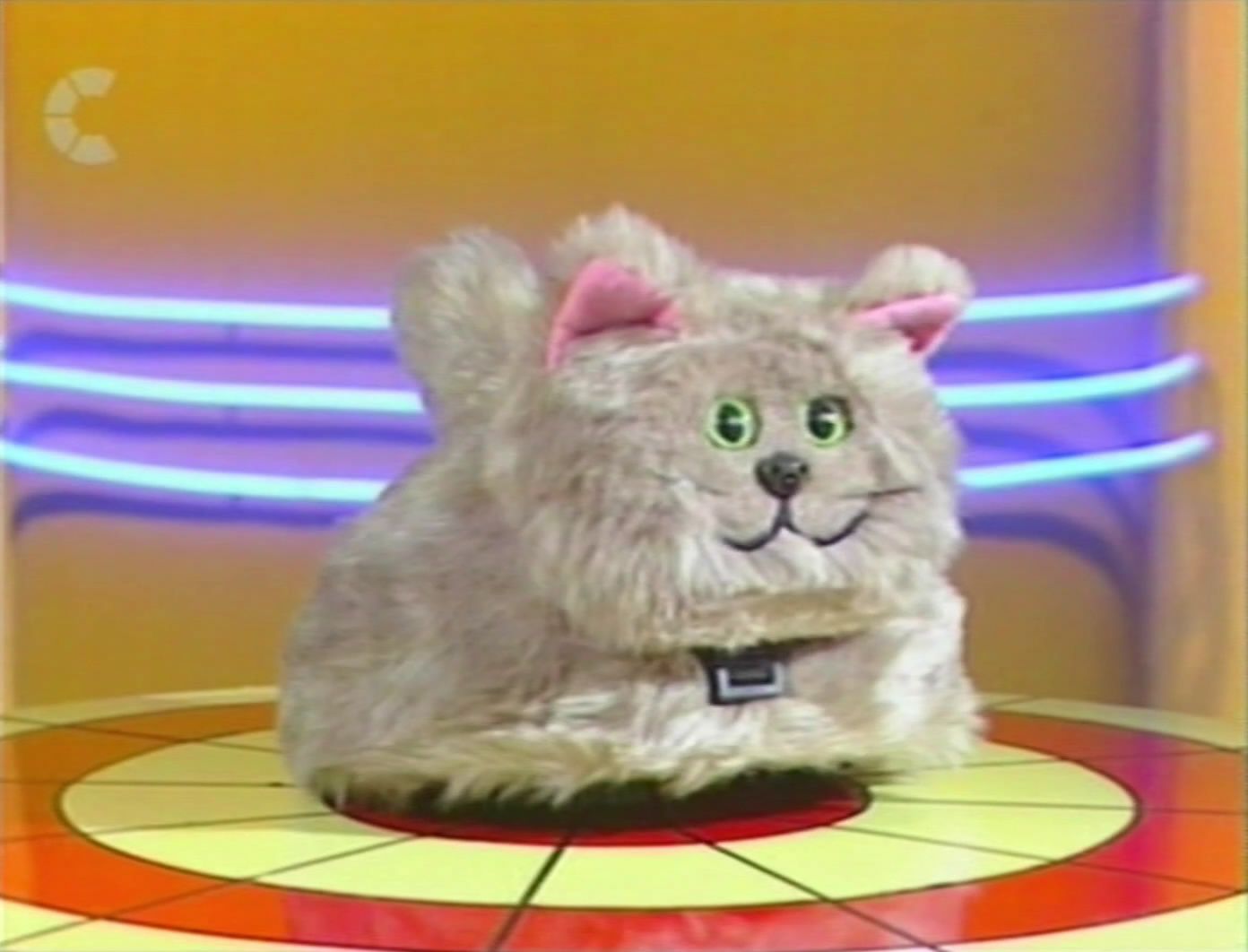
On the other hand, this is a prize from series 2. It is a selection of board games. One is "Sixth Sense", while another is "Trubbel", which is just the German language version of "Sixth Sense". They even have the same photograph on the box. The Bullseye game was often given away free with the prizes anyway, so overall, this isn't the best prize.
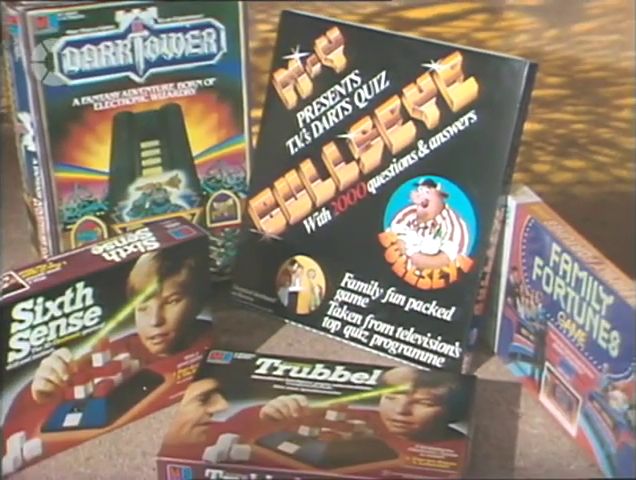
The Star Prize was a bit hit and miss. The legendary example is the speedboat, which is a great prize if you specifically want, and are expecting, a speedboat, but a terrible prize otherwise. All or most of these were made by Fletcher in Burntwood in Staffordshire. There's an article about them here.
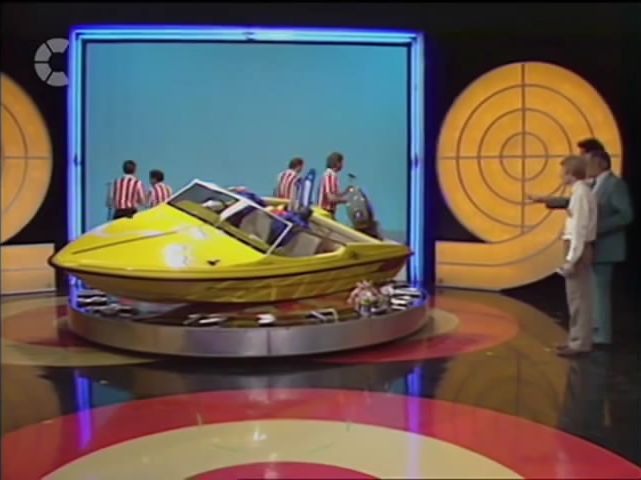
Presuming the speedboat comes with a trailer, you would still need your own well-powered car, a tow bar, and somewhere to store it, and that's before you even got around to using it. Then you would need to have access to a lake or the sea, and to know all the rules about when and where you are allowed to use it. You would need to know how to actually put the thing into the water and operate it. You would need to understand tides, the weather and so on. Some prize speedboats came with water skis, which boggles the mind. It would cost you money and trouble just to own a speedboat. (The prize is not quite so bad when you know that the contestants could take some money instead.)
Other prizes were better: fancy holidays, small cars, expensive sets of sofas, kitchen equipment and so on.
The worst star prize of all time was a time-share at Walton Hall (Series 5, episode 6, guest Cathie Gibson-McCulloch): It's in the Midlands and probably as far from the seaside as you can get. You would have had to pay regular maintenance fees to keep the time-share. Worse, the time-share company collapsed shortly afterwards:
https://www.thefreelibrary.com/Turning+a+Shakespearean+dream+into+a+multi-million+pound+tragedy.-a060848793

Apart from that, a disappointing prize was the "Bullseye £2000 fashion spree - up to the minute outfits from a leading fashion chain" (series 7, episode 7, guest Ritchie Gardner). It was £2,000 worth of clothes. Clothes might be nice, but few people would choose clothes over the equivalent value in cash.

According to a Jim Bowen talk, the earlier Star Prizes were usually worth about £6,000. According to the closing credits of episodes of Bullseye, holiday prizes were often supplied by travel agencies, and cars were often supplied by the manufacturers e.g. Peugeot. The most expensive prize for the production company was probably the Treasure Chest (£5,000 in cash) as it would have cost them exactly £5,000.
Random thoughts on Bullseye
If you ever go back in time to play Jim Bowen-era Bullseye, I don't think it is worth gambling your money and prizes for the Star Prize. Only about 20% of the Star Prizes were ever worth having, and even the best dart players in the world could mess up and not get what is often 101 in three darts (if their partner isn't any good at darts). I also think it is best to go on Bullseye with your spouse so that you don't have to divide up the prizes. Also get your partner to practise darts several hours a day for weeks beforehand. And if you are not good at darts, aim for the bottom left quarter of the board, which statistically will get slightly better results. (Also, don't turn up dressed like the boss of a FTSE 100 company because no one will want you to win.)
Someone who knows nothing about darts can learn a lot about throwing from watching players on Bullseye. The professionals and the dart throwing contestants generally keep their bodies still and throw with just their arms. (Jocky Wilson is an exception.) The quiz contestants often throw jerkily using their whole body, and so get inaccurate and inconsistent results. If you want to know how to do something well, you need to recognise when it is done badly, which Bullseye gives you an opportunity to do. I don't think I've ever seen a professional on Bullseye throw in any manner other than the "trebuchet" way - e.g. forearm bent, wrist towards towards shoulder or face, and then arm unfurled to release the dart. None of the professionals ever threw with their arm starting from the chest or anything like that. (In one of the Christmas shows, John McCririck threw underarm, as if he were trying to throw a tennis ball through a low window. He still hit the board.) With the exception of Billy Lennard wearing a jumper in series 8, all the professional guests had short-sleeve shirts so there was nothing restricting their arms.
In later series, the conversations with the contestants before the charity thrower starts are clearly just there so the footage can be used to fill up time if needed. It is free-standing footage that can be edited out or included without any trouble. That's why they sometimes talk for so long about nothing.
This is irrelevant but... there's a moment in "An American Werewolf in London" when the main character is bored in a flat and so trying to find something to watch on TV. He flicks through the channels, and for a few seconds, there's a darts match on:
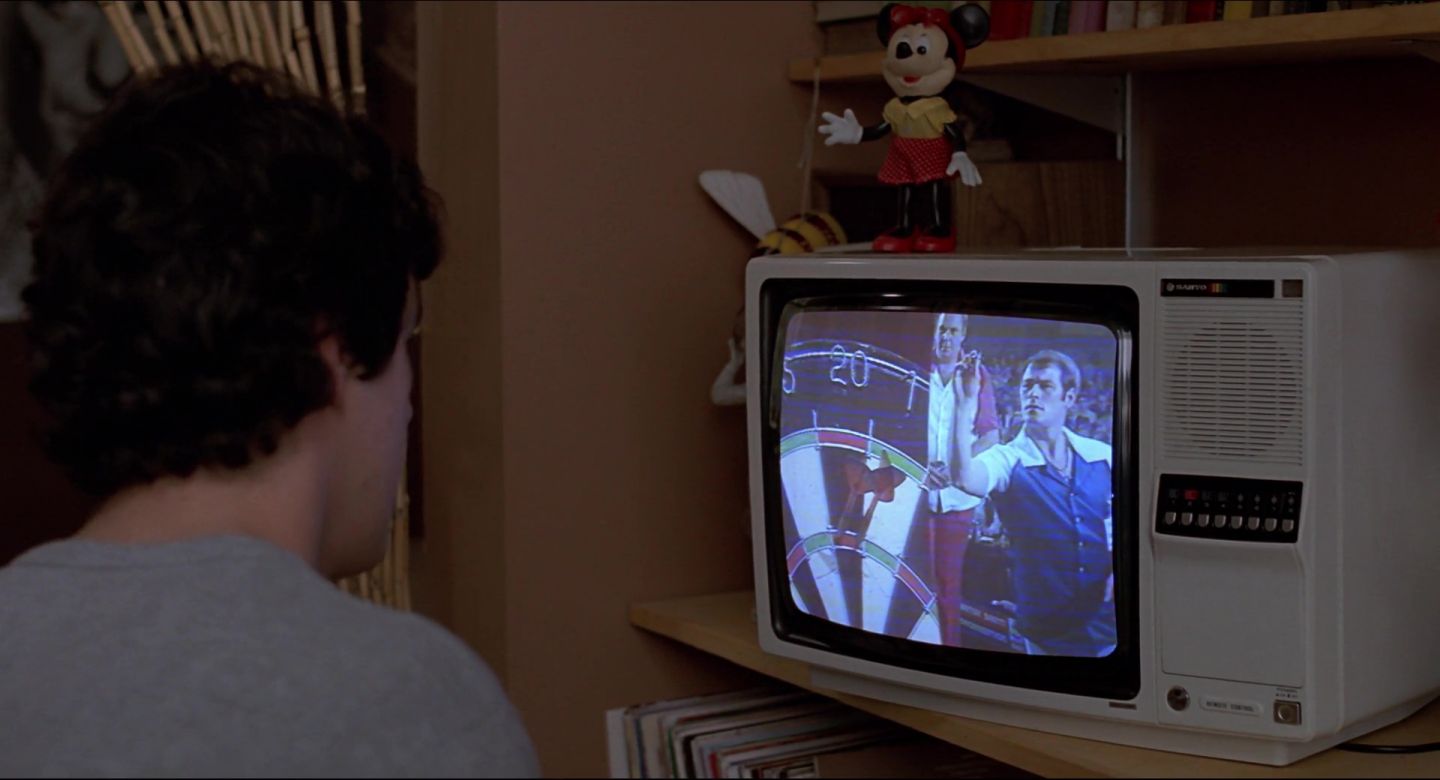
It's a match between Rab Smith and Cliff Lazarenko, who have both been on Bullseye. The scorer is Bullseye's Tony Green, but you only get to hear him say "one hu...". It's the closest thing to Bullseye being in a Hollywood film that we have so far. The clip is from the 1981 Arctic Lite Nations Cup final. The actual game is on YouTube here.
Next page
Top












